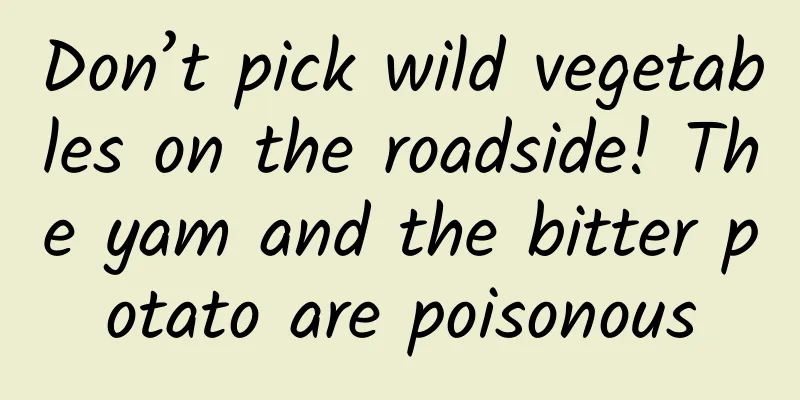Don’t pick wild vegetables on the roadside! The yam and the bitter potato are poisonous

|
The Food and Drug Administration of the Department of Health has received two consecutive poisoning cases, both of which were caused by people accidentally eating poisonous wild vegetables on the roadside. One was the "gupo taro" which looks similar to taro, and the other was "big bitter potato" mistaken for yam. A total of seven people were poisoned after eating them. Fortunately, they were all detoxified in time and no further harm was caused. Taro leaves (left) and taro (right) look similar and may cause people to eat them by mistake. (Photo courtesy of Food and Drug Administration) Lin Xuyang, chief of the Food and Drug Administration's research and inspection group, said that the two poisoning cases occurred at the end of February. Two people in New Taipei City ate sour hot pot and experienced numbness, swelling and vomiting in their mouths an hour later. Samples from the bottom of the pot were identified as containing the rhizomes of taro, which caused the poisoning. Taro, also known as calla lily, yam, lotus root, and heavenly lotus, contains the plant toxin calcium oxalate. Because its appearance is similar to taro, incidents of poisoning from accidentally eating taro are common in Taiwan. It should be noted that the entire plant of taro is poisonous, so its roots, stems, and leaves cannot be used in cooking. In Nantou County, five residents collected wild vegetables on their own but mistook bitter potatoes for yam. They cooked yam and pork ribs soup and drank it, which caused poisoning. They also experienced vomiting, nausea, and numbness in their hands and feet within an hour. Lin Xuyang said that the big bitter potato, also known as sweet potato taro and sweet potato thorn, is a poisonous plant containing alkaloids. Severe poisoning can even cause convulsions and difficulty breathing. Lin Xuyang reminded that the common feature of these two food poisoning incidents is that the appearance of poisonous plants is similar to that of general edible plants, which can easily lead to misjudgment. In addition to calling on the public not to eat plants of unknown origin, which cause irreparable damage to their health; if symptoms of physical discomfort occur, they should seek medical attention as soon as possible and keep samples of the food they eat to facilitate correct diagnosis and treatment. |
>>: Clenbuterol enters the country! Hu Zhiqiang: Strict control and zero detection
Recommend
What methods can be used to treat ovarian cysts?
Although ovarian cysts are not a common disease, ...
What are the symptoms of dysmenorrhea?
Many women experience dysmenorrhea during menstru...
What to do if your menstrual period is too much
Excessive menstrual flow is a problem that troubl...
How much does menopause surgery cost
Nowadays, many female friends are troubled by men...
Symptoms and diagnosis of adnexitis
Adnexitis is a common gynecological disease. Clin...
How should women recover after abortion? There are 7 major hazards of abortion for women
Nowadays, the number of cases of painless abortio...
Long-lasting intestinal tract and fewer allergies! This is how the intestinal health plan works
"If your intestines are healthy, you won'...
The most annoying thing for women with endometrial tuberculosis
Endometrial tuberculosis has certain hazards, whi...
Prevention of cervical hypertrophy should avoid continuous stimulation of estrogen
Experts say that prevention of cervical hypertrop...
What are the advantages of painless abortion
Painless abortion is the most popular abortion me...
How does habitual miscarriage occur? Knowing it early will benefit you sooner
Habitual miscarriage is indeed very disturbing fo...
Is headache a symptom of hyperprolactinemia?
Hyperprolactinemia is a very common disease among...
Experts explain the main symptoms of cervical erosion
Cervical erosion is a gynecological disease cause...
Not only can it help you boost your spirits before exercise, it turns out that energy drinks can also be consumed like this!
Energy drinks can be found everywhere in our live...
What are the main symptoms of cervical hypertrophy?
What are the main symptoms of cervical hypertroph...









